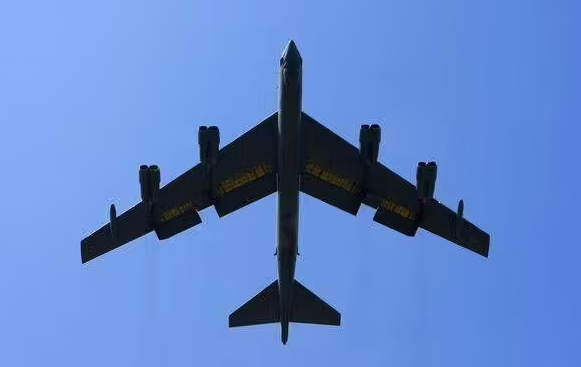The U.S. Air Force has deployed a fleet of long-range, nuclear-capable B-52H Stratofortress bombers to Andersen Air Force Base in Guam, a key Pacific outpost, as tensions escalate with China over its military posturing around Taiwan.
While the exact number of aircraft has not been disclosed, the Pacific Air Forces confirmed the deployment is part of a Bomber Task Force (BTF) mission to bolster strategic deterrence across the Indo-Pacific. The B-52H bombers, which can carry up to 70,000 pounds of nuclear or conventional weapons, are part of the 2nd Bomb Wing from Barksdale AFB, Louisiana.
Part of a Broader Show of Force
This move comes alongside the redeployment of the U.S. NMESIS ship-sinking missile system to the Philippines during Exercise KAMANDAG 9, a multinational military drill that includes forces from Philippines, South Korea, Japan and the UK.
The exercises, which run through June, aim to strengthen maritime security, regional cooperation, and interoperability among allies. The U.S. Marine Corps emphasized their commitment to maintaining peace and stability in a region increasingly threatened by Chinese naval expansion.
Strategic Positioning
Andersen Air Force Base, located in Guam, is part of the Second Island Chain—a vital element in the U.S.’s Pacific defense strategy. This chain acts as a maritime chokepoint designed to counter potential Chinese naval advances.
Earlier this year, the base also received four B-1B Lancer bombers, which, unlike the B-52H, are non-nuclear but capable of carrying up to 75,000 pounds of conventional ordnance.
Rising Tensions with China
The deployment occurs amid growing concern over China’s military drills in the region and renewed threats toward Taiwan, which Beijing views as a breakaway province. U.S. officials believe the bombers’ presence serves both as a deterrent and a signal of resolve to defend its interests and those of its allies.
As Chinese warships maneuver near Taiwanese waters and regional security tensions heighten, Washington appears increasingly focused on forward-deploying assets to reassure allies and dissuade aggression in one of the world’s most volatile flashpoints.









